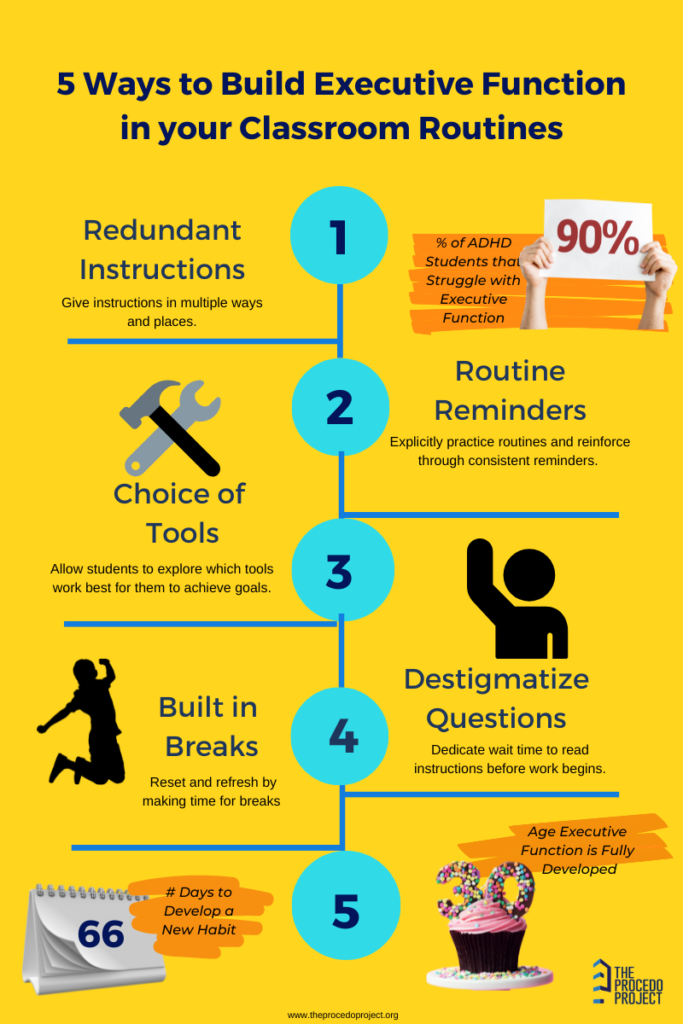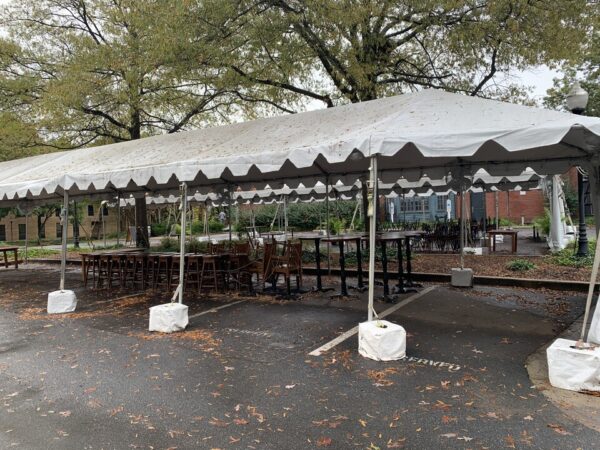As a busy parent, juggling school physicals, uniform shopping, haircuts and reprogramming sleep cycles over the next couple of weeks, it has me thinking about of those new school year resolutions I always make and never keep past October, like making the boys eat a good breakfast, kids making their own lunches and daily checks of the school website. My own executive function has suffered during the pandemic and despite the new stressors around returning to campus after 18 months of virtual and hybrid schooling, I am looking forward to having a routine again (even though it involves a commute). I have a 9th grader and an 11th grader, and boy have we gotten lax about routines in the last year. Summer was a welcome reprieve from responsibilities, but now we are in it to win it!
Executive function isn’t fully developed until around age 30 and it is not one single skill, but components of cognitive function. Depending on where a child is on the journey, they may be further ahead in some areas, while still developing in others. Taking time to build and practice some executive function habits and skills into our early routines in the school year can help set kids up for success for this year and for life! Over 90% of students with ADHD struggle with executive function, so simple supports ingrained into classroom habits can help all students succeed while building lifelong executive function skills. Here are 5 ways to build executive function into your classroom routines to ease the transition back to campus and save yourself headaches later in the year.

Redundant Instructions
Say them, post them on your website, make sure they are in the assignment instructions and repeat them in the rubric. It sounds like overkill, but when you think about how much time you spend repeating yourself, you will actually be saving time and sanity in the long run. Over time your students will know that if they didn’t get it the first time, there are always other places to look. This can also help reduce anxiety for students and parents who struggle to keep up with what is going on in the classroom.
Practice Routine Reminders
The first few weeks of school are full of routines and procedures. Students are learning where they have to be, what materials they need and possibly navigating a new campus like my freshman will be doing. It takes an average of 66 days for a new behavior to become automatic so practice is essential. Secondary students are juggling 7 instructors’ preferences and routines and even elementary students often have to circulate to different classrooms and teachers. “Rules have consequences and routines have reminders.” Realize that some students may pick up your routines quickly while others will take longer and need more practice until the behavior sticks. Avoid negative consequences for mistakes in favor of reinforcements and reminders.
Empower Choice of Tools
Some people I know love project management software, some write down checklists. Personally, I live and die by my calendar. Different things work for different people. As long as a student has a system and it is working for them we should empower them to use it. Provide a structure for staying organized in and out of class, but allow for some variation as long as students are successful. High stakes notebook checks that only measure organizational skills are not measuring content mastery. Think about how you can help students build wins and confidence in their ability to manage multiple responsibilities and tasks in a way that works for them.
Destigmatize Questions
How often do we ask students if they have questions, get no response and then get asked the same question multiple times? It is not because they were all willfully not listening, but likely they didn’t feel confident enough to ask a question aloud. Consider building in a thinking time of 60-90 seconds after giving instructions before anyone can begin. This will make space for students to process instructions, reread them and get clarification without feeling like a nuisance. It will also remind them that asking questions is part of taking ownership of their learning and is an appropriate behavior.
Built In Assignment Breaks
I mean this literally and figuratively. Take long term projects and break them into smaller deadlines and goals so they are not overwhelming. Better yet, have students practice sectioning big projects into smaller manageable deadlines, making their own accountability plan when possible. Additionally, don’t forget the importance of students getting out of their seat and moving around. If the class is not connecting with a lesson or seems lost, take 30 seconds to stand up, stretch, jump up and down or get the blood flowing in a different way so they can reset and retry.
Executive function can be just as important a predictor of academic success as IQ. Lead with compassion and patience as you jump into the new year with routines, rules and procedures. Sometimes we have to go slow at first to go fast later. Take time to reinforce, remind and practice to help build resilience and empower students to take responsibility for their executive function skills. Most importantly, don’t forget to celebrate successes, particularly with those who struggle the most.



